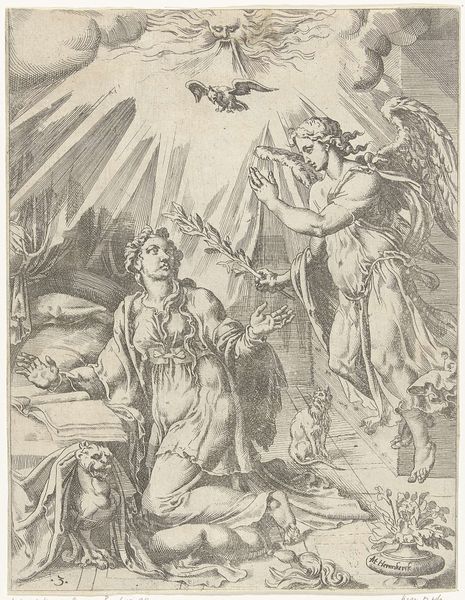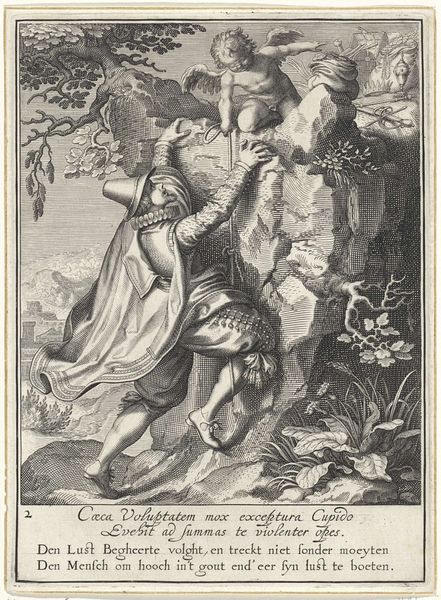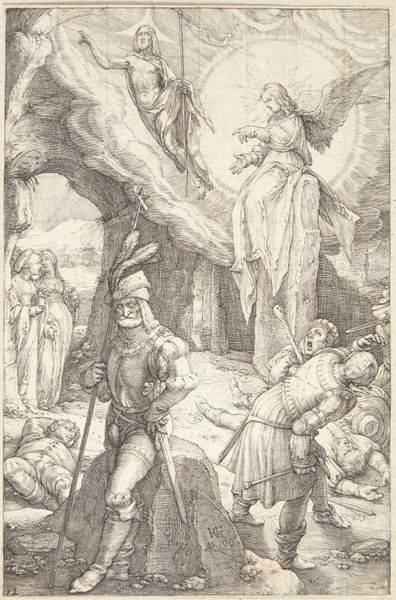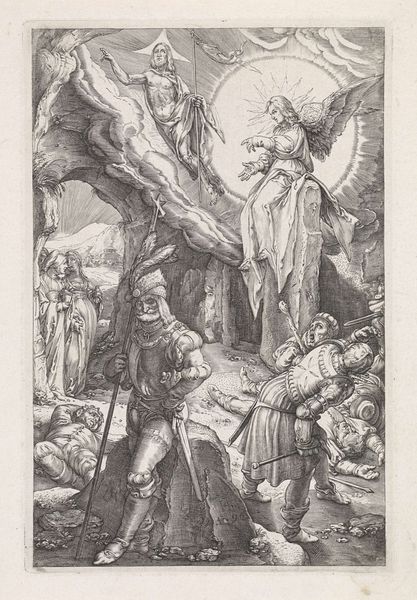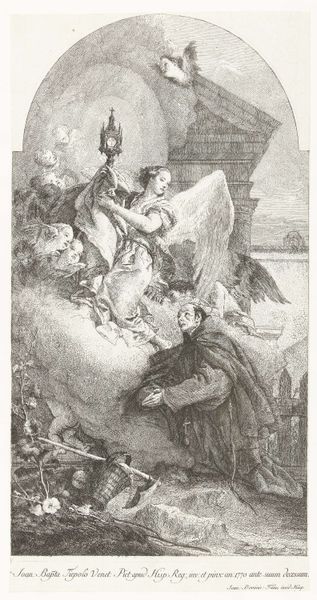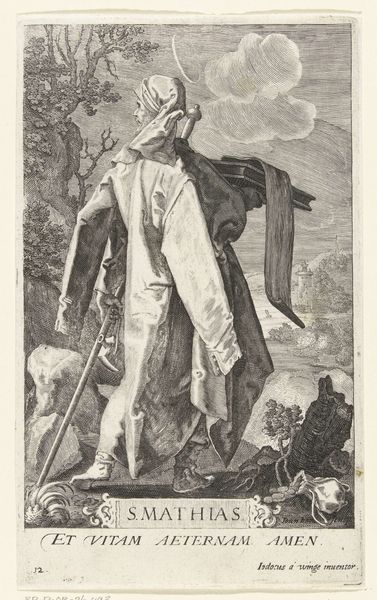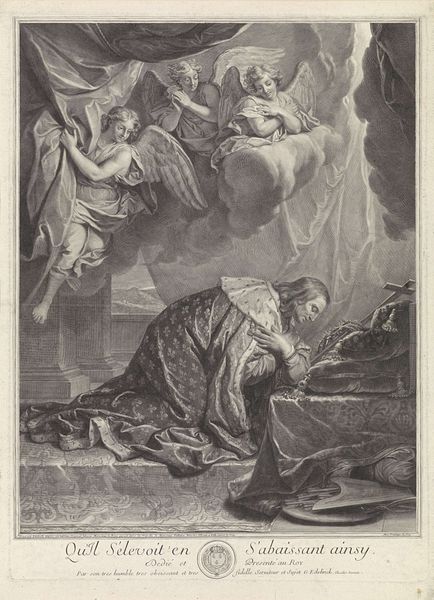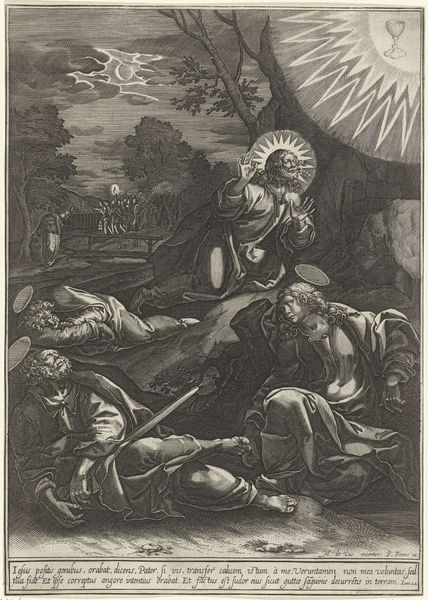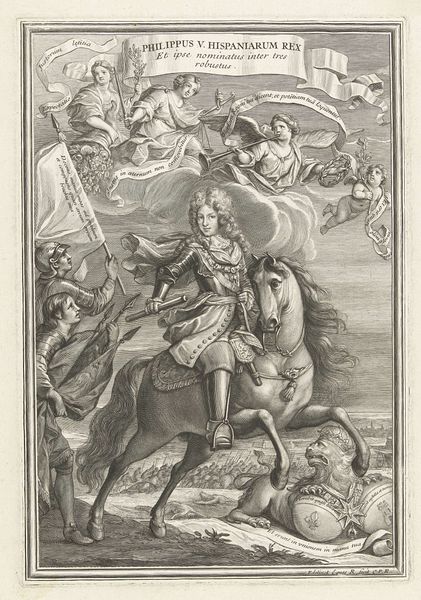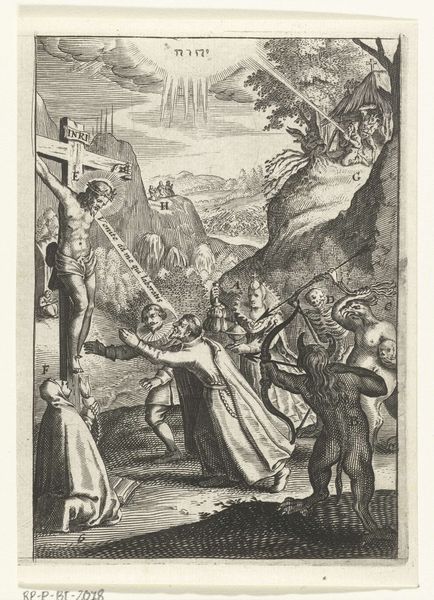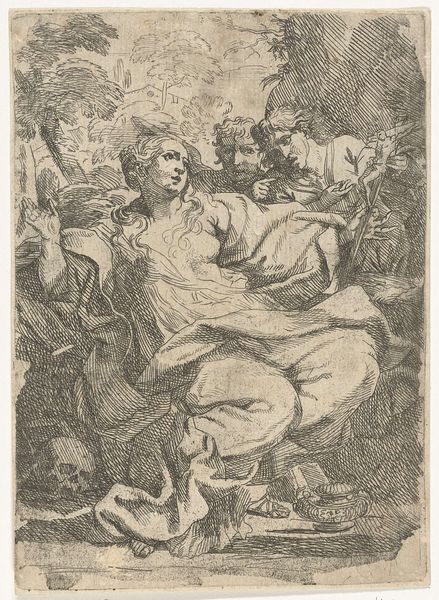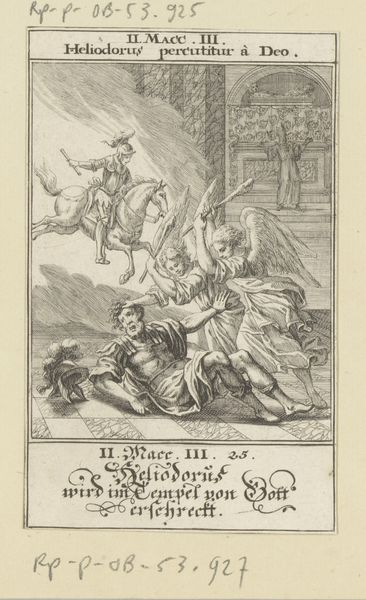
engraving
#
portrait
#
allegory
#
baroque
#
figuration
#
history-painting
#
engraving
Dimensions: height 240 mm, width 178 mm
Copyright: Rijks Museum: Open Domain
Curator: Immediately, I’m struck by how skillfully Harrewijn uses engraving to create such a dramatic scene. The stark contrast, the detail in the armor. Editor: Yes, that detail is incredibly captivating. One immediately notes the figure clad in armor—the subject of this engraving—, a commanding presence despite the modest scale of the work. "Figuur in harnas met kroon en scepter," or Figure in armor with crown and scepter, it is believed to date from 1682 to 1730. Curator: It is so interesting to look at this through a post-colonial lens, knowing what we know today, the way monarchy would appropriate various cultures and put on the guise of empire, it’s interesting to see what imagery they chose. It's powerful propaganda, if I may. Editor: Absolutely. And if you observe closely at the base of the print, you'll notice discarded arms, broken tools, implying vanquished labor. The materiality speaks to how such power is enforced. Harrewijn does an extraordinary job there. Curator: The symbolism, with that imposing eagle behind him and crown and sceptre… the layers of political assertion are thick. Even with that religious imagery right at the top—that ringed cross overhead suggests a divine sanction for this worldly authority. It almost borders on gaudy but that may also be Harrewijn’s style, perhaps to appeal to particular audiences or patrons. Editor: Yes, notice also the somewhat flattened perspective, especially with that backdrop behind him. These choices emphasize certain narratives, almost simplifying the historical and material realities of the subject's reign, perhaps. I see it less as gaudy, but a choice in aesthetic, to appeal. Curator: The Rijksmuseum is so lucky to have secured this for us to analyze together. It's an arresting image—even after all these years, it provokes important conversation. Editor: It certainly does. Harrewijn's intricate detailing really forces one to contemplate not only the representation of power but the actual mechanisms that both produce and uphold such hierarchical systems. It makes one appreciate both the work, and also those labor practices within the society this engraving may have been circulated in.
Comments
No comments
Be the first to comment and join the conversation on the ultimate creative platform.
